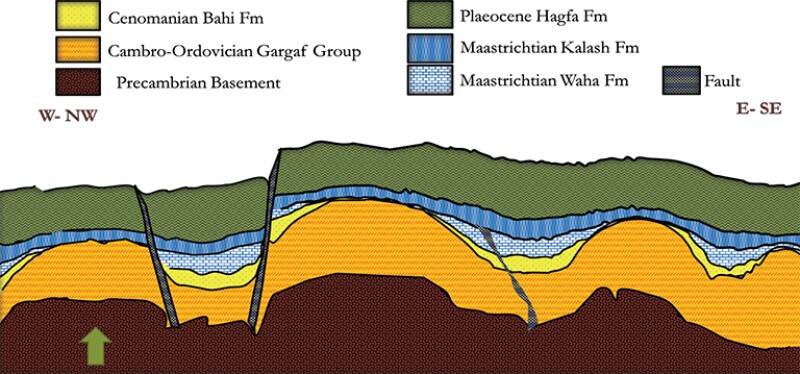The study outlined in the complete paper focuses on developing models of the Upper Cretaceous Waha carbonate and Bahi sandstone reservoirs and the Cambrian-Ordovician Gargaf sandstone reservoir in the Meghil field, Sirte Basin, Libya. The objective of this study is to develop a representative geostatistically based 3D model that preserves geological elements and eliminates uncertainty of reservoir properties and volumetric estimates. This study demonstrates the potential for significant additional hydrocarbon production from the Meghil field and the effect of heterogeneity on well placement and spacing.
Introduction
The reservoir of interest consists of three stratigraphic layers of different ages: the Waha and Bahi Formations and the Gargaf Group intersecting the Meghil field. The Waha reservoir is a porous limestone that forms a single reservoir with underlying Upper Cretaceous Bahi sandstone and Cambro-Ordovician Gargaf Group quartzitic sandstone.


